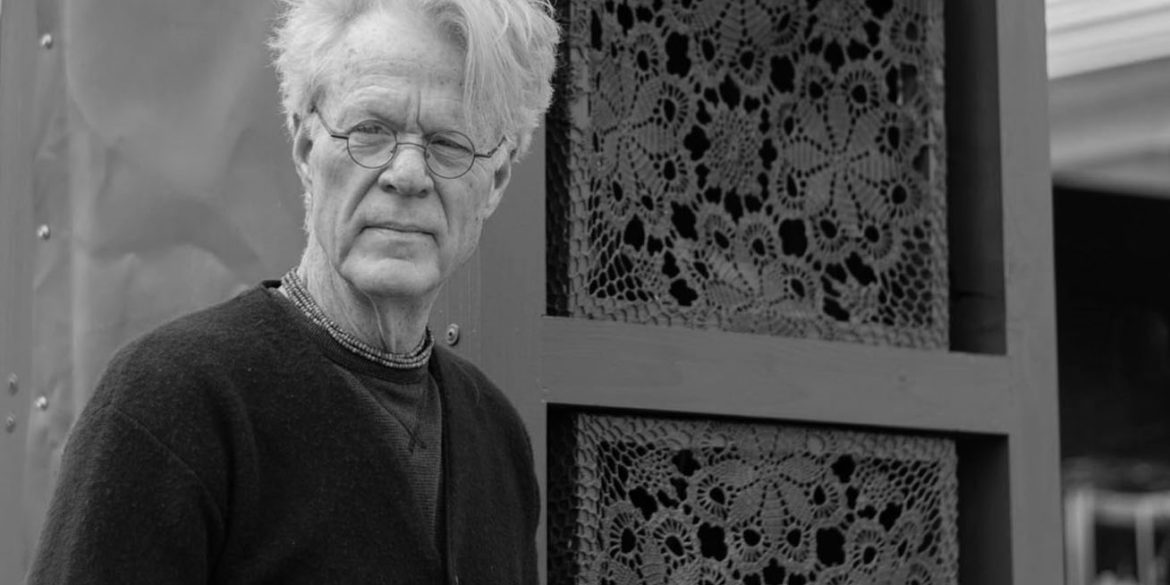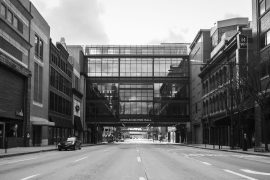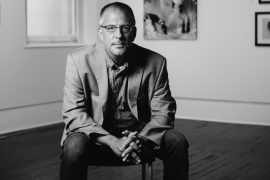Frank Mullen has a very interesting story to say the least. With a degree in architecture, he’s been able to travel the world and recently settled in Indy to pursue a master’s degree at Herron. Learn all about him and his newest piece below!
Samantha Ripperger: Tell me about yourself.
Frank Mullen: Some time ago I went to art school, but transferred midstream and wound up with a Bachelor of Architecture. I practiced design and forensic consulting for years, and eventually decided to ditch my American life. I moved to Cambodia, where I lived and worked on the campus of the Sylvia Laskey School in a provincial town. I put my nose down and started working on school buildings, a house and some other things. I built a lot of spirit houses too, one for each of the larger projects. The Cambodian people, and those ubiquitous spirit houses, are what really stuck with me.
After that I lived in Vietnam, wrote a novel, and studied language teaching. Afterwards, I started a small English language school in a slum in New Delhi. Then I came back to Indianapolis, to finally focus on my art practice in a way that didn’t have to fit into checked baggage. I’m now finishing my first year in the master’s program at Herron, and Song of the Exception is part of my work there.
SR: You describe this piece as “the broadcasted noise we believe.” Can you elaborate on that and explain the meaning behind it.
FM: The piece underwent several shifts in meaning, as I struggled to figure out why I was building it. At first it was more a piece about America, as a vehicle for exploring the ideas of patriotism and nationalism, and more broadly, nationhood. I find myself on the lunatic fringe in the debate over border walls, since I’m not sure about borders in the first place. It seems to me their purpose is entirely unsanctifiable. We learned how to live in a world with them – chances are we could live in one without them.
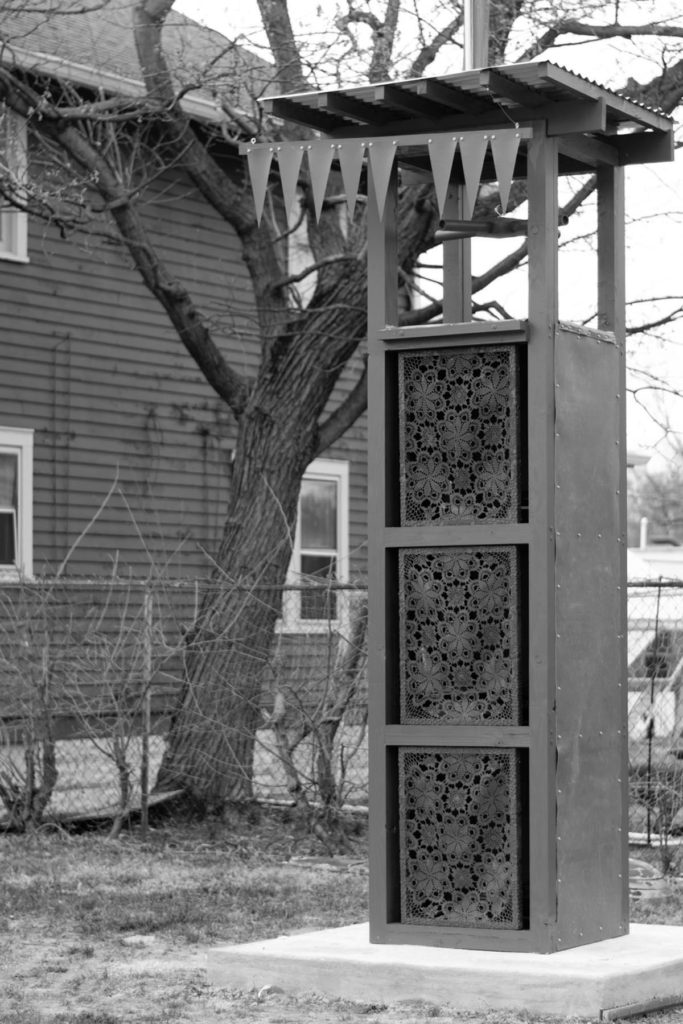
Eventually I realized, as I plowed through the construction of the sculpture, that this question of nationhood was only one aspect of a broader shit-hailstorm of spiritual noise that comes at us daily, in defiance of the solitude that might otherwise afford us the chance to explore larger, more elemental questions.
The radios in the piece are tuned to various stations, or just static, as a way of replicating the militancy of the noise. Seems to me we accept this banter as a substitute for the reality we don’t have time to examine.
SR: Tell me about the Song of Exception that you created to accompany this piece.
FM: The playlist was created for broadcast on opening night, and is made of songs that somehow describe America, from someone’s perspective, in both good and bad lights. But as the meaning of the piece changed, the songs became less important and they became absorbed into the noise. There are some good tunes in the playlist though – Merle Haggard and Pink, and others.
SR: Where did you come up with the idea for this piece?
FM: As part of the graduate program at the Herron School of Art and Design, I was given the opportunity to exhibit a piece at the Tube Factory, the mothership of Big Car Collaborative. They have a radio station called WXRT, and they offered it as part of the exhibit, so I took them up on it. From there we talked about the radio program of the same name as Song of the Exception, and I kept building the physical piece, the broadcasting tower as I’ve called it.
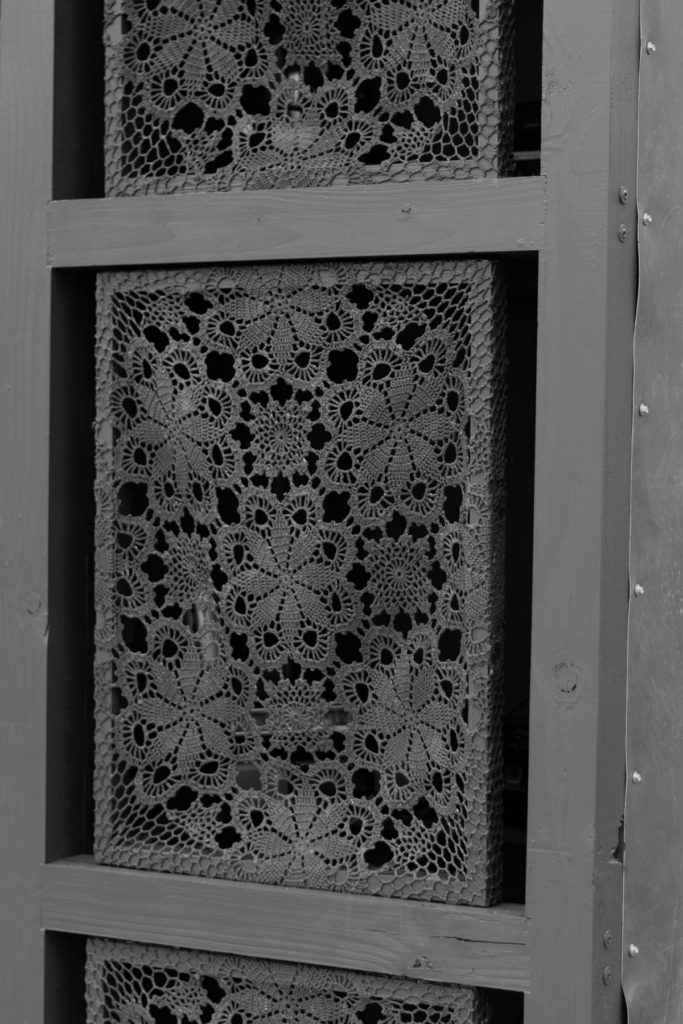
The radio component and the sculpture evolved while I kept building what I didn’t yet understand. What stands today at the Tube Factory is a desperate collection of grey paint, ordinary framing lumber, and FM radios. But I like it, I think, as you would like an exorcism if you needed one.
SR: What is your favorite piece you have created? What would be your dream piece to create?
FM: This is a horrible cliché, I know, but it’s my next one. As I continue to explore the world through sculpture, the pieces build on the lessons of each other, getting closer to the answers I’m seeking.
The next piece is, believe it or not, a small shrine for an old concrete statue of Mary, the kind you see mounted in upright bathtubs. I can’t stop thinking about it.
My dream project would be to build a small village somewhere in the third world, and live in it with my wife and our dog.
SR: What’s in the future for you? 5 or 10 years from now?
FM: I expect to be making sculpture somewhere in the world. I’m getting ready to retool my practice so it’s more portable, since in all likelihood I’ll end up in a teaching position or residency that doesn’t offer the kinds of tools I’ve become addicted to at Herron. I’m going to focus on smaller, more intricate pieces, 1/10 the size of Song of the Exception, and I intend to continue to incorporate sound into my work. This summer I’m building a tiny recording studio, about the size of a toilet stall in a public restroom, so I can record an audio version of the holy book I’m writing.

